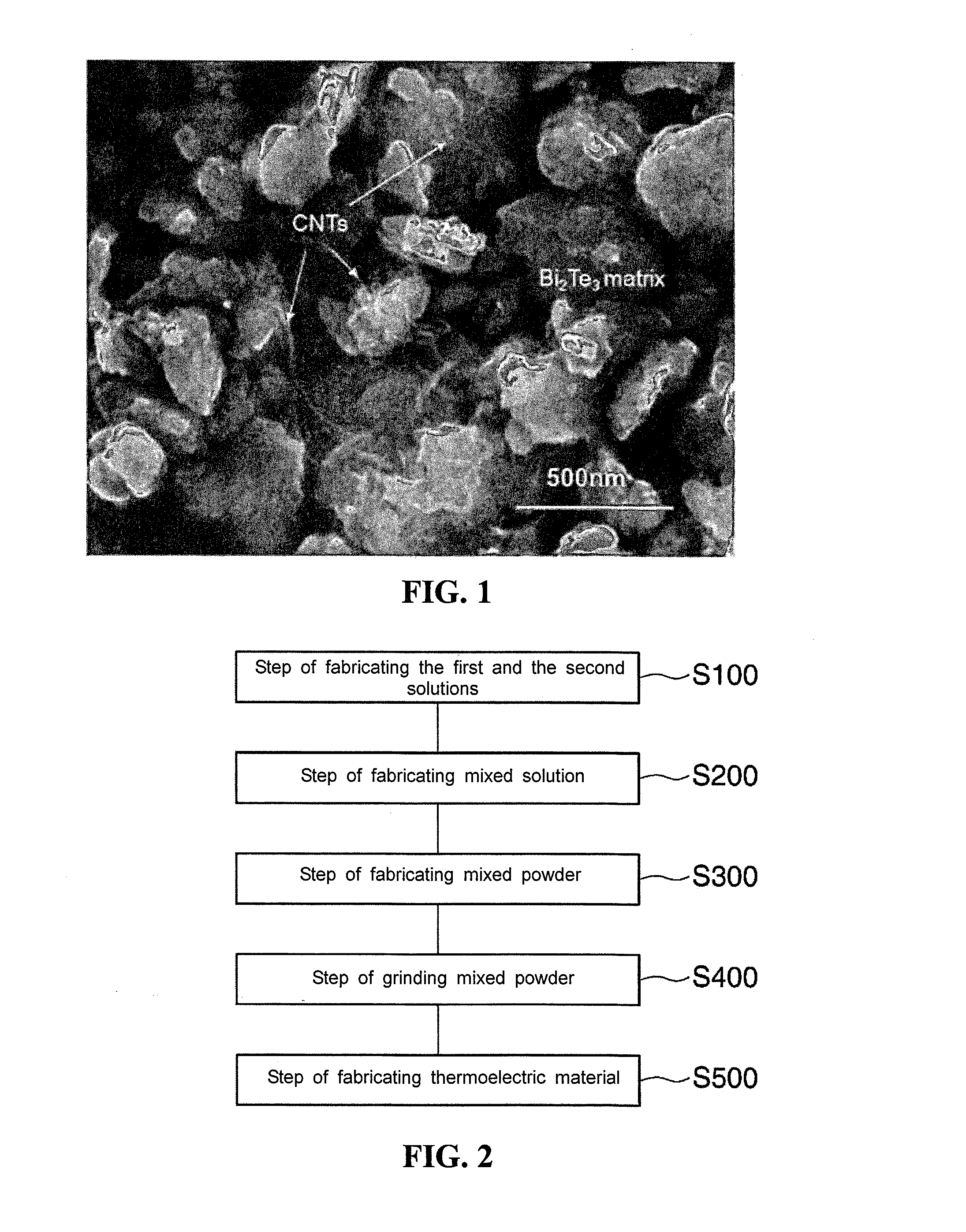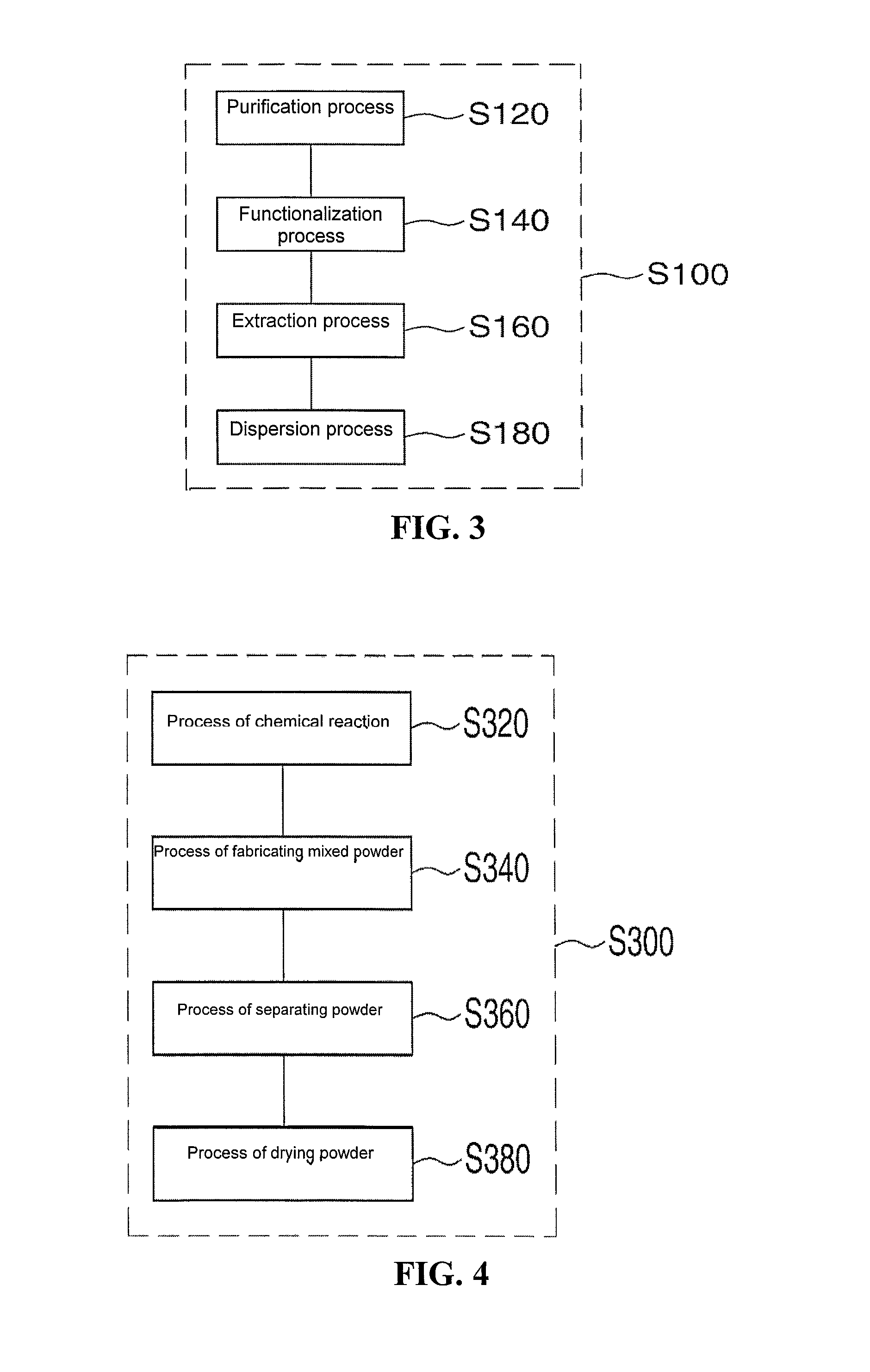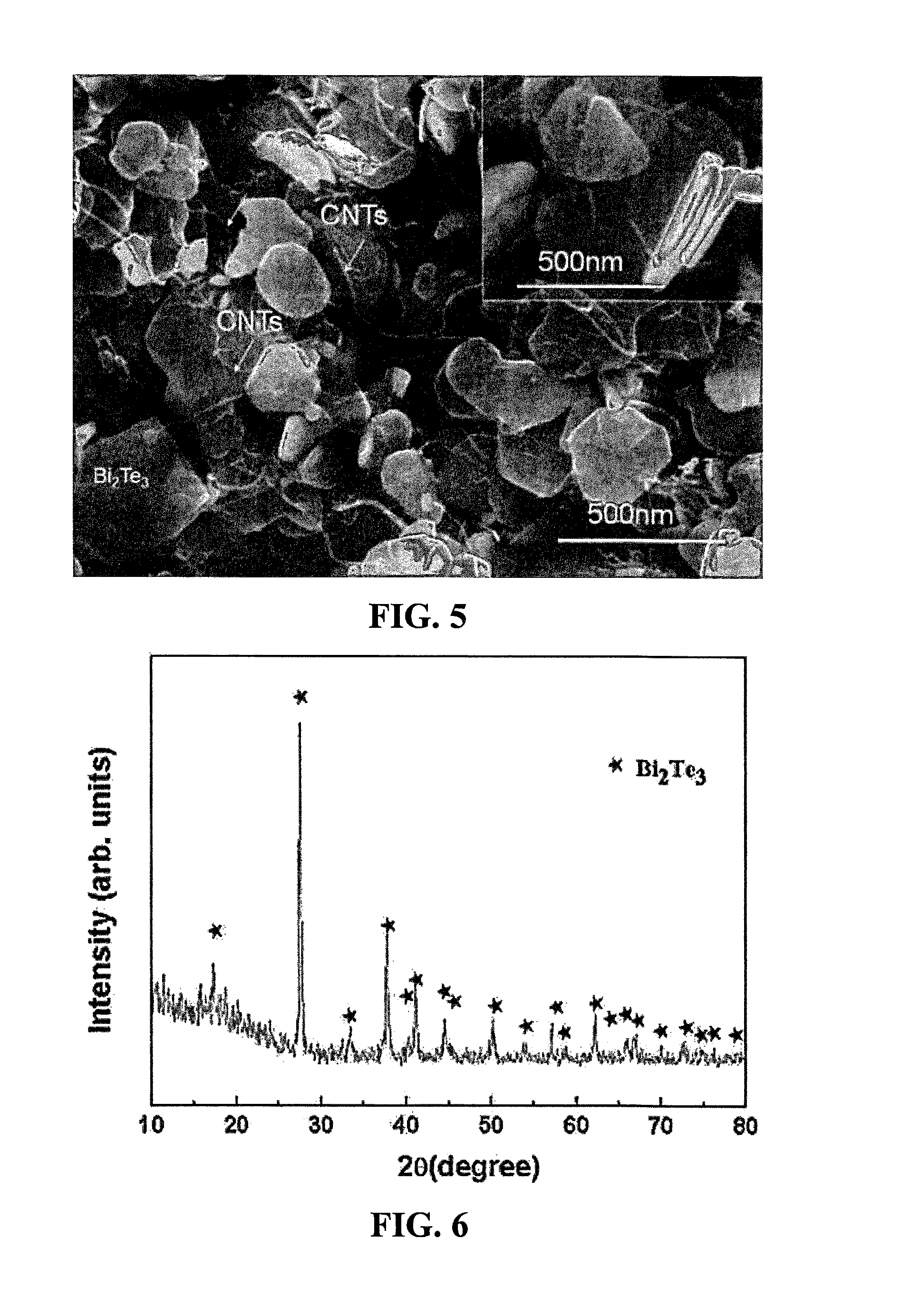Thermoelectric material and composites made from thermoelectric material and a method for fabricating thereof
a thermoelectric material and composite material technology, applied in the field of thermoelectric materials, can solve the problems of difficult to completely remove the agglomeration of nano-dispersoids, difficult to secure synergistic effect, and decrease in electric conductivity, so as to improve the conductivity of carbon nanotubes, improve the effect of electric conductivity and enhance the seebeck coefficien
- Summary
- Abstract
- Description
- Claims
- Application Information
AI Technical Summary
Benefits of technology
Problems solved by technology
Method used
Image
Examples
Embodiment Construction
[0058]Here, the structure of the thermoelectric material according to the present invention will be described referring to the attached FIG. 1.
[0059]FIG. 1 shows an enlarged photograph of the thermoelectric material according to the present invention.
[0060]The thermoelectric material according to the present invention, which comprises carbon nanotubes dispersed inside the nano-crystallized thermoelectric material, can realize characteristics of nano-dispersed phase and nano crystal boundary at the same time.
[0061]That is to say, the above thermoelectric material is made by mixing a first solution in which carbon nanotubes are dispersed and a second solution containing metallic salts, and mechanically grinding, mixing, and treating with heat mixed powder formed by a chemical reaction. The obtained thermoelectric material has a structure that part of the above carbon nanotubes is inserted inside.
[0062]In an embodiment of the present invention, multi-walled carbon nanotubes are used as...
PUM
| Property | Measurement | Unit |
|---|---|---|
| volume fraction | aaaaa | aaaaa |
| size | aaaaa | aaaaa |
| temperature | aaaaa | aaaaa |
Abstract
Description
Claims
Application Information
 Login to View More
Login to View More - R&D
- Intellectual Property
- Life Sciences
- Materials
- Tech Scout
- Unparalleled Data Quality
- Higher Quality Content
- 60% Fewer Hallucinations
Browse by: Latest US Patents, China's latest patents, Technical Efficacy Thesaurus, Application Domain, Technology Topic, Popular Technical Reports.
© 2025 PatSnap. All rights reserved.Legal|Privacy policy|Modern Slavery Act Transparency Statement|Sitemap|About US| Contact US: help@patsnap.com



